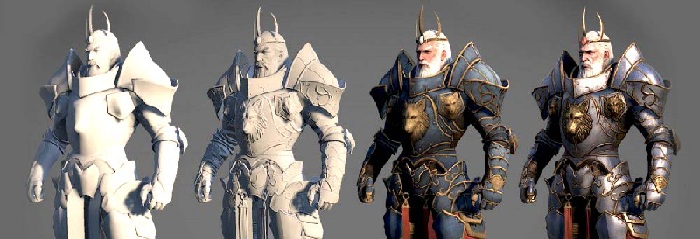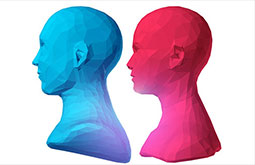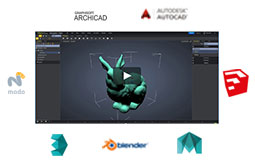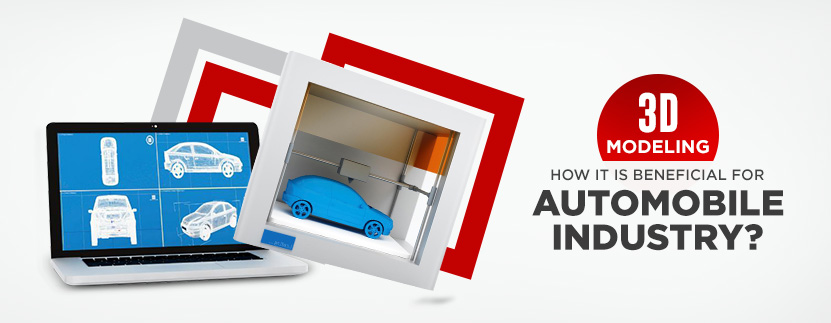12 Best 3D Modeling Techniques Every 3D Designer Should Know
With the introduction of 3D modeling technology, the designs became more realistic and faster to produce than 2D. Now, enabling customers to visualize a movement, access, or space has become an easy task. Dimensions could be easily viewed in the 3D space for various objects and their relationships. It is even easier to carry out spot changes in the designs for determining its viability.
Apart from that, 3D models can be also utilized for creating the 2D designs directly so that the cost of making the changes would be less. And, since the domain of 3D modeling is so vast, many are not aware of the different 3D modeling techniques that are present and the benefits they can offer. Thus, to make you aware of the various techniques and benefits, we have compiled this post to help you get a precise idea of the subject.

Types of 3D Modeling Techniques
There are various types of 3D modeling techniques. However, only a few of them are more utilized in certain areas. So, now, let us now discuss the most important techniques that are helpful to create the best 3D modeling projects.
-
3D sculpting

This technique mostly has an artistic side and utilizes faces, vertices, and edges. In this case, the shaping process is separated from the technical details of individual elements, and brushes are used for manipulation instead of selection. The influence area of the brushes can organically reshape the geometry by using the correct brush type or setting. Digital sculpting is mainly used for creature, character, or animal design. It is of three different types, such as mesh, multi-resolution, and dynamic topology.
-
NURBS and curve modeling

NURBS usually stands for non-uniform rational b-spline. In this kind of modeling, you need to create curved surfaces depending on the control points. Here, you can interpret between the points in the same curve while also developing bridges between various curves. You can create a net of curves for representing the edges of the object and then fill in the geometry for creating the whole object. The technique is mostly utilized in engineering but not much when it comes to the 3D modeling uses for art or VFX.
-
Box modeling

In the box modeling technique, you need to start with a primitive object like a sphere or cube. Now, use the classic 3D modeling tools to work on the low poly shapes for creating the desired object. It can be a bit mechanical since you need to control the individual vertices, faces, or edges. With its help, you can emphasize more on modifying the whole shape or larger objects at a single time. It works best for creating hard surface objects. The commonly used tools for box modeling are beveling, extruding, and loop cuts.
-
Surface modeling

The creation of organic mold depends heavily on using this technique. This feature helps to create a 3D spline using a 2D one. Skilled developers can create a spline within no time using the surface 3D modeling technique. The ones that we see in movies use surface modeling to an extent. This nifty little feature is available in almost all the top software. However, it is important to know the features of easy 3d modeling software for beginners.
-
Primitive modeling

Just because modeling evolved from primitive shapes, it shouldn't be left behind. Cones, cubes, and cylinders are some of the primitives used for custom 3D modeling. They are helpful to design furniture, building models, and immovable objects which don't require any skeleton. 3DS Max and Maya are two of the best 3D design software used in the industry for developing such forms.
-
Procedural modeling

Procedural modeling comes in various sizes and shapes and is of two types. The first one is based on a tool that is specifically designed to generate a large number of similar objects procedurally. For example, while designing the model for a building generator, you need to input various parameters such as the number of floors, the height of the ceiling, the shape of the roof, etc. After that, you can run the program multiple times, and a new model will be created each time you run it. The second method is related to shading. The shaders used here often have displacement outputs through which simple primitives such as a plane or sphere are taken. Then, their surfaces are deformed using mathematical formulas for creating a complex surface or object.
-
Simulation

There are a variety of digital simulations such as cloth, fluid, ocean, fire, smoke particles, physics, soft body, etc. With the help of simulation, you can develop a setup with various parameters and objects which will interact over time with each other. The computer will then evaluate the movement of those things and the changes in the frame each time the simulation is run. Then, the results can be used to create animation, scenes, or objects.
-
Modular modeling

Modular modeling is usually implemented while creating 3D assets. For example, let say you are creating a cityscape, and you need to create multiple building blocks that have a similar look. In that case, you can implement modularity for reusing specific parts of a building for the other. You can also model various sections of the building and rearrange them for creating variations.
-
Boolean modeling

Here, you need to cut the model and add another object so that a new shape is created. It is closely related to the box modeling technique and can be used together. Usually, the model shapes are created with box modeling and then combined with the help of boolean operations. There are different boolean operations like union, intersect, and difference. The union operation will generally merge two objects, the intersect operation will save their shared geometry, and the difference operator cut the volume or shape of an object from the other. With the boolean modeling methods, less time will be spent on creating or mimicking complex shapes.
-
Photogrammetry

For the photogrammetry technique, you need to take a photograph of an object from various angles in proper lighting conditions. Now, feed those pictures into a specialized program for interpreting and generating the 3D object representation. The process might incur various advantages and disadvantages. The advantages will include the development of 3D designs that are completely realistic. It might also generate UV Maps and textures so that you do not have to work on it again. The disadvantages are you need to rework the mesh either by using retopology or re-mesh. It might lead you to rework the UV Map. Besides, extensive cleanup might also be added to your work since the camera will only capture the object but not its surroundings.
-
Kit bashing

Here, you need to start with a kit of objects for combining them into more detailed ones. It is commonly used for designing objects with hard surfaces and organic modeling. The process will enable you to explore how various pieces can fit perfectly together without even the need for the final piece of imagery. Kit bashing is generally used to create details in a scene. However, while using it, you need to be aware of the ratio of low, middle, and high-frequency detail. The ratio should be well composited so that you have a good combination of various detailing distributions.
-
Polygon modeling

It is basically a type of 3D modeling technique that is similar to that of box modeling. However, the only difference here is that the process starts with a simple shape or single vertex without any depth. It is then modeled by gradually adding pieces to it. The tools used here are also similar to that of box modeling but used in a detailed way. In this process, you need to work more on the vertices and edges, and the objects created will tend to have a harder surface but with organic shapes.
Conclusion
These techniques are the basic foundation of 3D modeling technology. People having a niche in 3D printing should use NURBS modeling as a start-off. However, if the project you are working on is really important, then it is better not to mess with it and look for a companies providing 3D modeling services. You can submit your specifications and ask them to deliver the project within a specified time. Ultimately, you will get a high-quality output that can serve your desired needs.
















